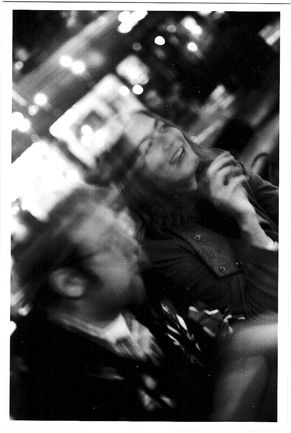I am an instrument. Stroke me.

Alex Ross ruminates on the differences between live and studio recordings in his New Yorker article, The Record Effect:
In 1964, Glenn Gould made a famous decision to renounce live performance. In an essay published two years later, “The Prospects of Recording,” he predicted that the concert would eventually die out, to be replaced by a purely electronic music culture. He may still be proved right. For now, live performance clings to life, and, in tandem, the classical-music tradition that could hardly exist without it. As the years go by, Gould’s line of argument, which served to explain his decision to abandon the concert stage, seems ever more misguided and dangerous. Gould praised recordings for their vast archival possibilities, for their ability to supply on demand a bassoon sonata by Hindemith or a motet by Buxtehude. He gloried in the extraordinary interpretive control that studio conditions allowed him. He took it for granted that the taste for Buxtehude motets or for surprising new approaches to Bach could survive the death of the concert—that somehow new electronic avenues could be found to spread the word about old and unusual music. Gould’s thesis is annulled by cold statistics: classical-record sales have plunged, while concert attendance is anxiously holding steady. Ironically, Gould himself remains, posthumously, one of the last blockbuster classical recording artists: Sony Classical’s recent rerelease of his two interpretations of Bach’s Goldberg Variations sold two hundred thousand copies. That’s surely not what Gould had in mind for the future of the medium.
A few months after Gould published his essay, the Beatles, in a presumably unrelated development, played their last live show, in San Francisco. They spent the rest of their short career working in the recording studio. They proved, as did Gould, that the studio breeds startlingly original ideas; they also proved, as did Gould, that it breeds a certain kind of madness. I’ll take “Rubber Soul” over “Sgt. Pepper’s,” and Gould’s 1955 Goldbergs over his 1981 version, because the first recording in each pair is the more robust, the more generous, the more casually sublime. The fact that the Beatles broke up three years after they disappeared into the studio, and the fact that Gould died in strange psychic shape at the age of fifty, may tell us all we need to know about the seductions and sorrows of the art of recording.
I love music, but for some reason – maybe because I had children so young and couldn’t go out much in my 20s – I haven’t been to that many live shows. A sad thing, really, since I spent my 20s and 30s in and near Seattle during the height of the grunge movement. I even knew Mark Pickerel (through one of my girlfriends), former drummer for the Screaming Trees and Neko Case. Wasted connections and opportunities on my part. Oh, the live Nirvana, Pearl Jam, Modest Mouse, and Death Cab For Cutie and multitude other famous bands I sadly missed. UTTERLY TRAGIC.
But I’m trying to go to more now; I went to see Robyn with my friend Scott last week and was mesmerized by the crowd. Her energy was incredible. As I watched and moved in automatic synchronization with the audience, I couldn’t help but observe the whole event through a design lens. Studying pink noise for my upcoming talk in Boulder, it was apparent to me while watching this performance that for musicians giving live performances, the crowd is an instrument to be played in the same way vocal chords, a guitar, the drums, or any other instrument is. In the same way that interaction between humans and machines require regular cycles of input and feedback for successful interactions, so too do musicians rely on interactive modes with their audience to realize their best work.
I also thought of crowds as singular organisms. What would happen if you took a collective brain scan during a concert like this? Would we also share a common immersion in pink noise? Being “ready-to-hand”, one with the crowd, the musicians, ourselves.
Maybe that’s why live performances are generally better. In the studio, musicians are missing their most important instrument: the crowd. In essence, they’re working with an incomplete interface.
